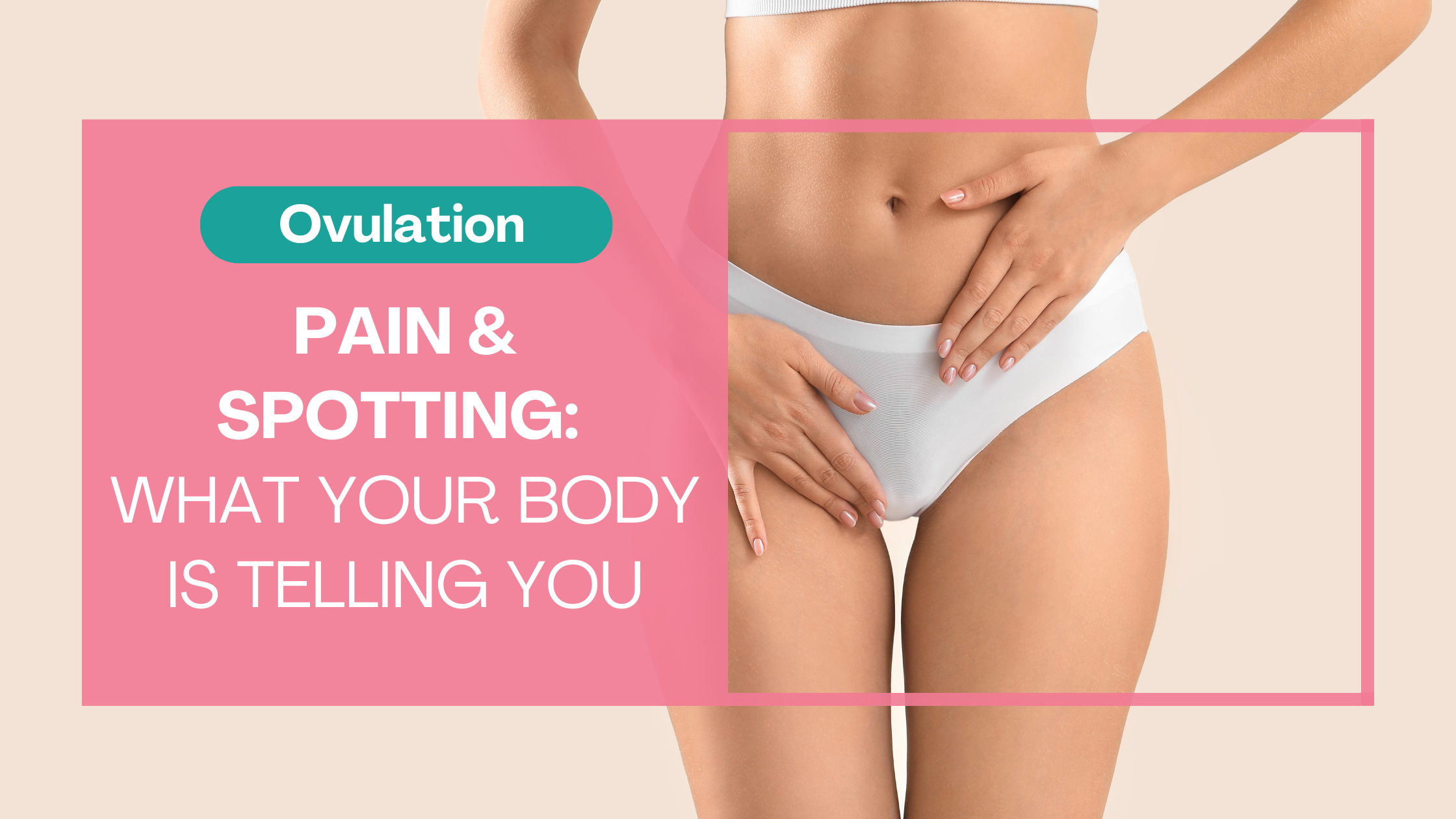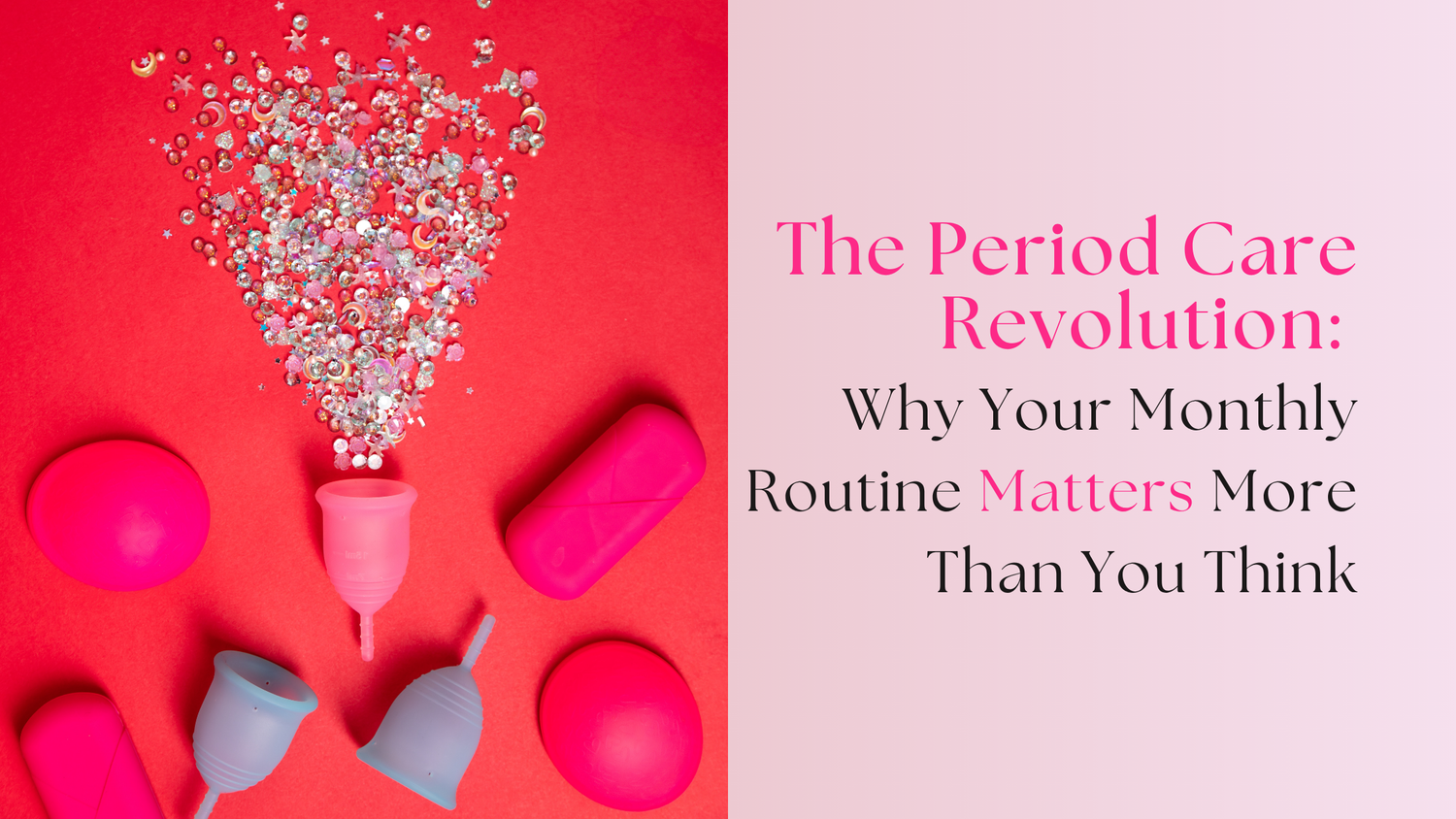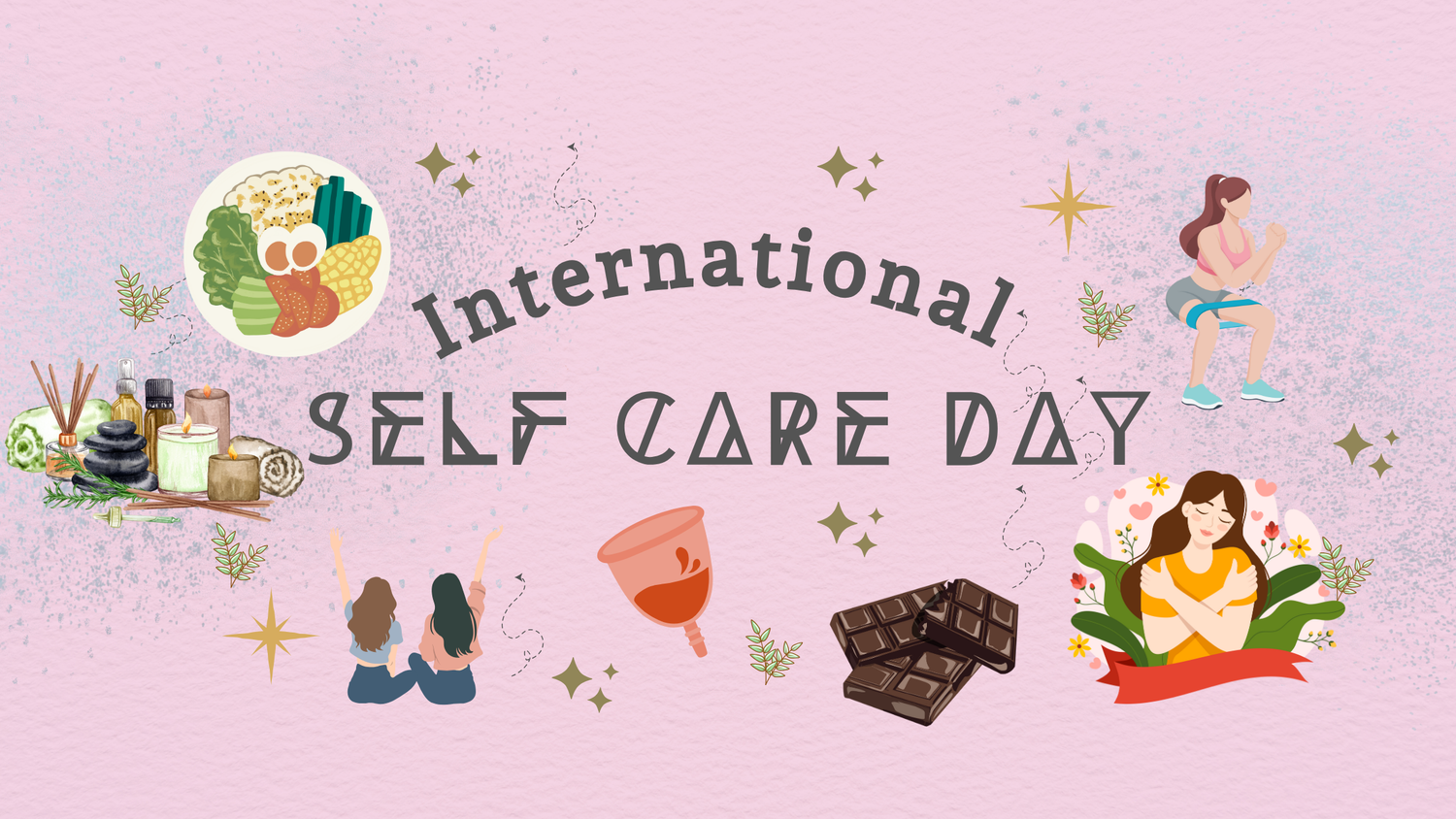Hello Beautiful!
Ever felt that twinge in your lower abdomen mid-cycle and wondered what's happening? Or noticed some light spotting when you're definitely not due for your period?
You're experiencing ovulation symptoms – and while they might be uncomfortable, they're often your body's way of saying "I'm fertile and my hormones are working!"
Let's chat about what's really going on, when to pay attention, and natural ways to find relief.
What's Actually Happening in Your Body
Ovulation is that magical moment when your ovary releases a mature egg, ready for potential fertilization. This typically happens around day 14 of your cycle (though every woman's body follows its own beautiful rhythm).
For many of us, this process happens quietly. But for about 20% of women, ovulation announces itself with some noticeable sensations.
When your follicle ruptures to release that egg, it also releases a small amount of fluid and sometimes blood. This is what causes both the pain and potential spotting. Your body is literally creating life's possibility each month – pretty amazing when you think about it!
Decoding Ovulation Pain (Mittelschmerz)
That pain you're feeling has a fancy German name: "Mittelschmerz" (literally "middle pain"). Appropriate, right?
Here's what it typically feels like: a sudden, sharp twinge or cramp; a dull, achy sensation that builds gradually; usually occurs on one side of your lower abdomen (the side that's releasing an egg that month); and might switch sides from month to month as your ovaries take turns.
The discomfort might last anywhere from a few hours to a couple of days. If it's brief and mild, it's generally nothing to worry about. In fact, some women use this sensation as a fertility awareness signal!
Understanding Ovulation Spotting
Noticed some light pink or brown discharge mid-cycle? This is likely ovulation spotting. It happens to about 3-8% of women and is typically caused by the small amount of blood released when your follicle ruptures. The slight hormonal fluctuation during ovulation can also cause some minor bleeding from your uterine lining.
Ovulation spotting is usually very light (just enough to notice when wiping or as light discharge), pink, red, or brown in color, brief (lasting from a few hours to a day), and not accompanied by serious pain.
Using menstrual cups or discs during this time can be helpful – they're comfortable enough for light spotting days and won't dry out your vaginal tissues like tampons might.
When to Pay Attention
While mild ovulation symptoms are normal, there are times when your body might be signaling something that needs attention.
Reach out to your healthcare provider if you experience: severe pain that interferes with daily activities; pain lasting longer than 2-3 days; heavy bleeding (more than light spotting); pain during sex; fever or nausea with the pain; or pain that gets worse over several cycles.
These could indicate conditions like endometriosis, ovarian cysts, or pelvic inflammatory disease that deserve proper care.
Natural Ways to Find Relief
Let's talk about how to make ovulation more comfortable – because you deserve to feel good throughout your entire cycle!
Heat Therapy
Your grandmother was right about this one! Heat increases blood flow and relaxes those cramping muscles.
Try a warm bath with Epsom salts, a heating pad on your lower abdomen, or a hot water bottle wrapped in a towel. Heat therapy works quickly and gives you a moment to pause and nurture yourself.
Anti-Inflammatory Foods
What you eat can either calm or trigger inflammation in your body. Around ovulation, focus on naturally anti-inflammatory foods like berries (especially blueberries and strawberries), leafy greens like kale and spinach, fatty fish rich in omega-3s, turmeric and ginger (try them in tea!), dark chocolate (yes, really – the darker the better), and nuts and seeds.
These foods help reduce the prostaglandins that can make ovulation uncomfortable.
Movement Medicine
While intense exercise might be the last thing you want during ovulation discomfort, gentle movement can work wonders.
Try gentle yoga (child's pose and cat-cow are especially soothing), a leisurely walk in nature, or swimming or water exercises (the buoyancy takes pressure off your pelvis). Movement increases circulation and releases endorphins – your body's natural pain relievers.
Hormonal Support
Supporting your hormonal balance throughout your cycle (not just during ovulation) can help reduce uncomfortable symptoms.
Our Balance Me supplement is specifically formulated to support your body's natural hormonal rhythm. With key ingredients like Vitex, Melissa officinalis, and Inositol, it helps maintain the delicate hormone balance that keeps ovulation smooth and your cycle regular.
Many women notice that their ovulation symptoms become milder after a few months of consistent hormonal support.
Hydration and Rest
Sometimes the simplest solutions are the most effective: stay well-hydrated (aim for at least 2 liters of water daily), prioritize quality sleep around ovulation, and take moments to breathe deeply and center yourself.
Your body is doing important work during ovulation – honoring that with proper rest can make a significant difference.
Your Cycle, Your Wisdom
Understanding ovulation symptoms is one more way to connect with your body's innate wisdom.
When you recognize the signals your body sends, you gain valuable information about your fertility, hormonal health, and overall wellbeing.
Using tools like menstrual cups or discs can help you become more familiar with your cycle patterns. Many women find that simply observing their discharge and sensations throughout the month gives them insights they never had before.
This body literacy is empowering – it puts you in the driver's seat of your reproductive health.
Frequently Asked Questions
How can I tell if what I'm feeling is ovulation pain or something else?
Ovulation pain typically occurs mid-cycle (around 12-14 days before your next period), is usually located on one side of the lower abdomen, and lasts for less than 48 hours. If your pain is severe, lasts longer than 2-3 days, or is accompanied by fever, heavy bleeding, or nausea, it's best to consult your healthcare provider as these could be signs of conditions like appendicitis, ovarian cysts, or endometriosis.
Is ovulation pain a sign of fertility?
Yes! Feeling ovulation pain actually confirms that your body is releasing an egg, which is essential for fertility. Some women even use this sensation (along with other fertility awareness methods) to time intercourse when trying to conceive. However, not feeling ovulation pain doesn't mean you're not fertile – many women ovulate without any noticeable symptoms.
How long does ovulation spotting usually last?
Ovulation spotting typically lasts from a few hours to 2 days at most. The spotting should be light – just enough to notice when wiping or as slight discharge. If you experience bleeding that's heavier or lasts longer, it's worth discussing with your healthcare provider to rule out other causes.
Embracing Your Cycle
Your menstrual cycle is so much more than just your period – it's a monthly rhythm with distinct phases, each bringing different energies and sensations.
Ovulation sits at the center of this rhythm – a powerful moment of potential and release.
By tuning into these sensations and understanding what they mean, you're honoring the incredible wisdom of your body.
Whether you're trying to conceive, tracking your cycle for health reasons, or simply wanting to feel more connected to your body's natural rhythms, paying attention to ovulation is a powerful practice.
Remember, your experience is unique, and there's no "right way" to experience ovulation. Some months you might feel it strongly, other months not at all – and both are perfectly normal.
Stay connected and empowered,
Heidi x
---
Ready to take the first step toward hormonal balance? Learn more about our Balance Me supplement and how it can support your PCOS journey at www.thekhushplace.com or reach out to us on Instagram @the.khush.place.





